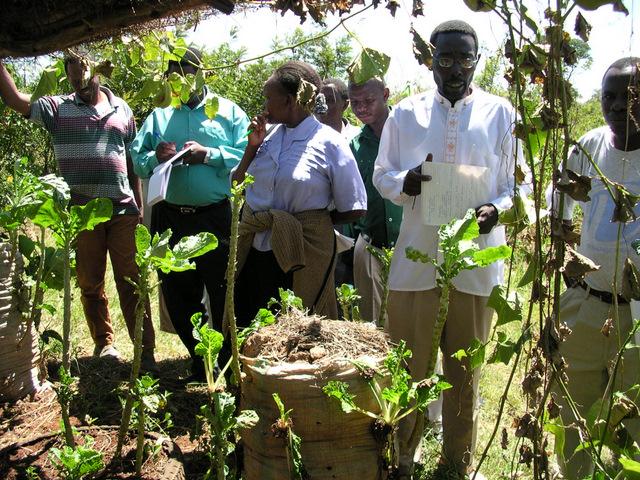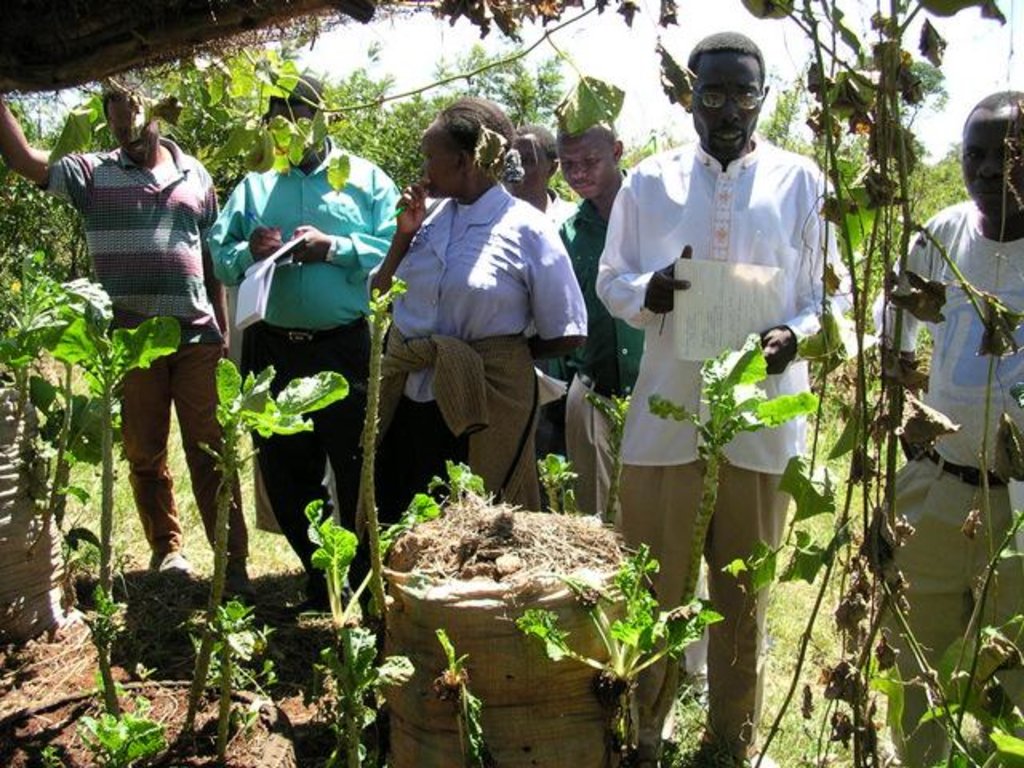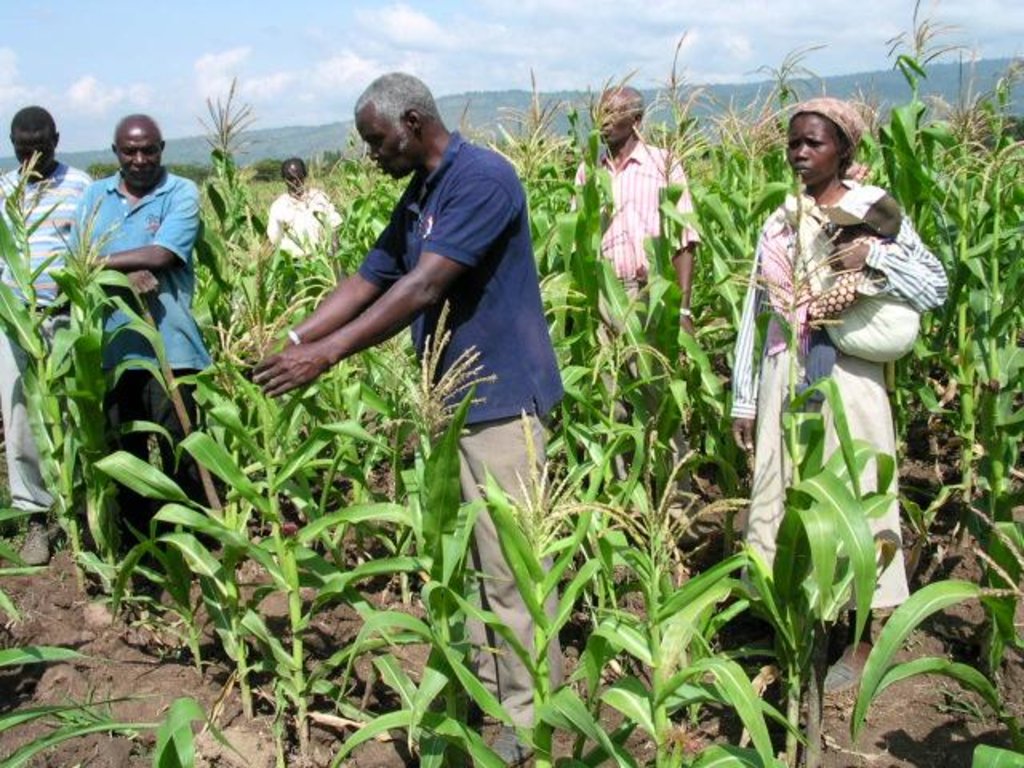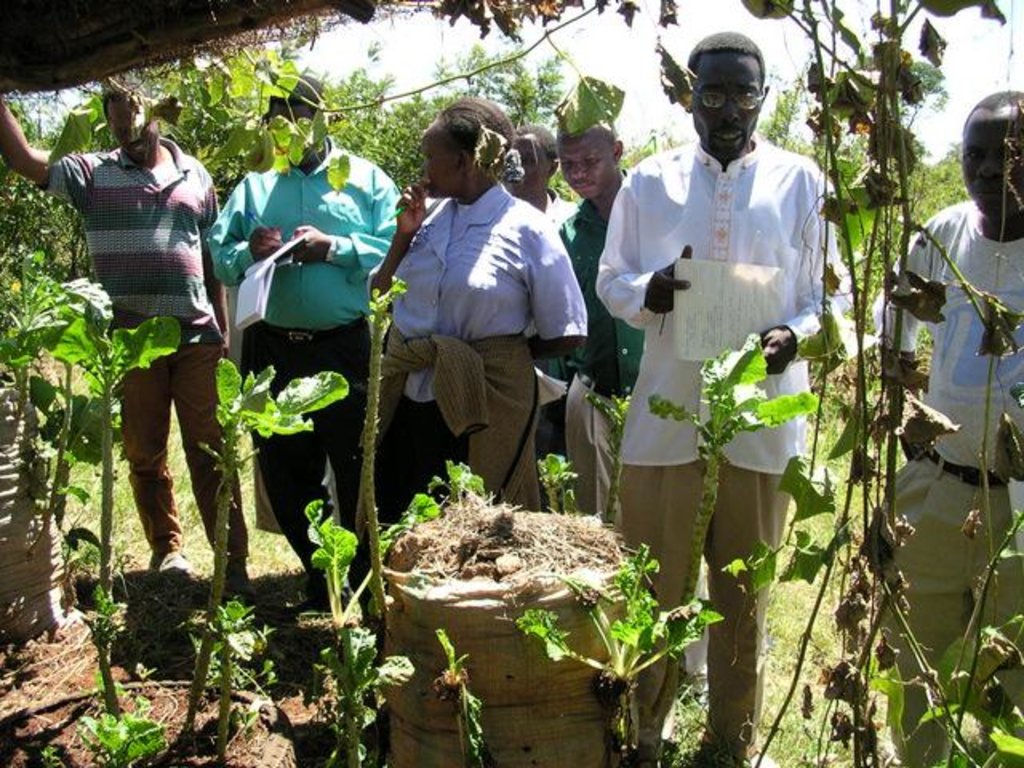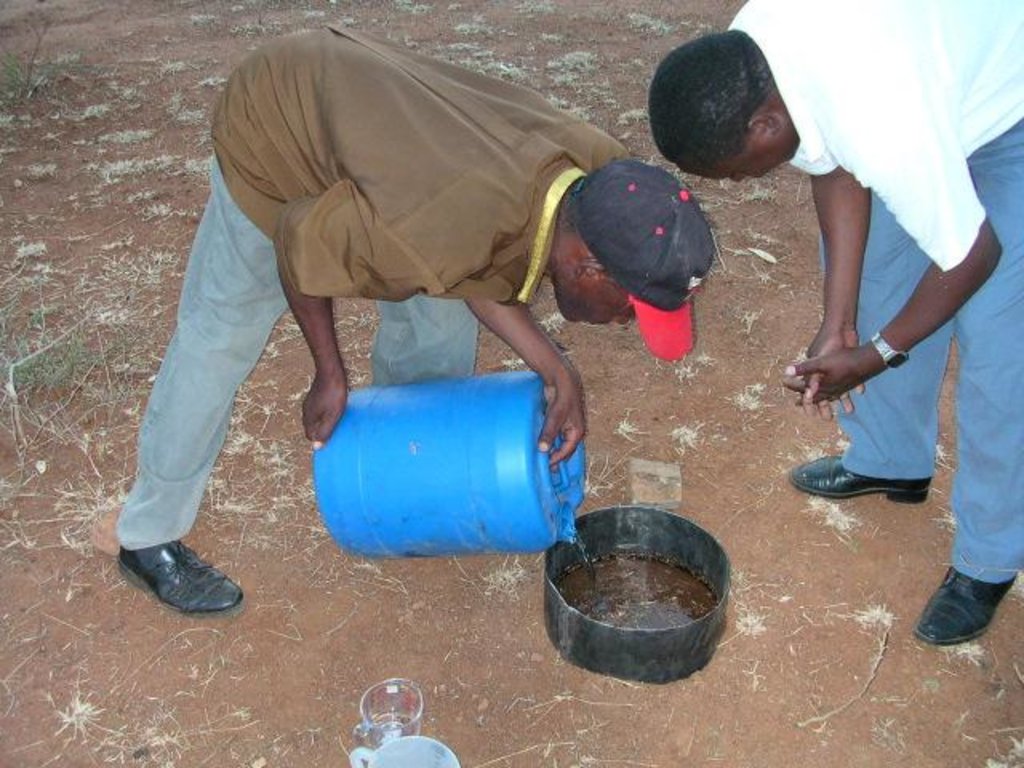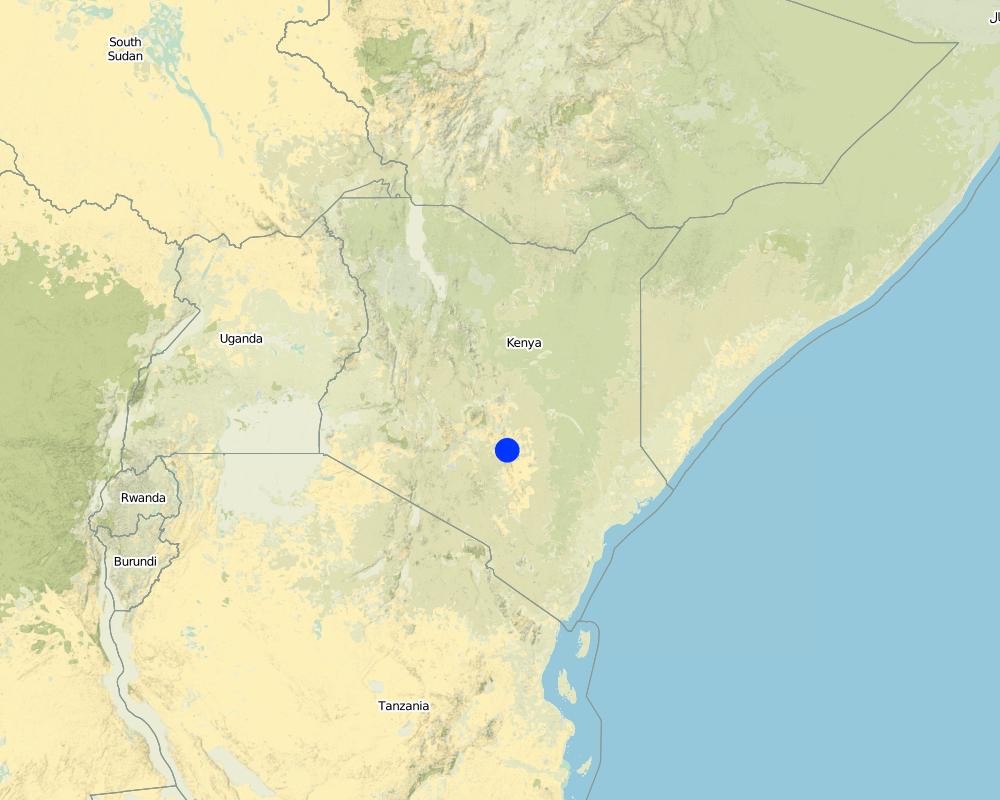Farmer Field Schools [Кения]
- Создание:
- Обновить:
- Составитель: Philippe Zahner
- Редактор: –
- Рецензент: Fabian Ottiger
approaches_2569 - Кения
Просмотреть разделы
Развернуть все Свернуть все1. Общая информация
1.2 Контактные данные специалистов и организаций, участвующих в описании и оценке Подхода
Специалист по УЗП:
Duveskog Deborah
deborah.duveskog@gmail.com
FAO
Кения
Специалист по УЗП:
Название организации (-ий), содействовавших документированию/оценке Подхода (если применимо)
FAO Food and Agriculture Organization (FAO Food and Agriculture Organization) - ИталияНазвание организации (-ий), содействовавших документированию/оценке Подхода (если применимо)
Swiss Agency for Development and Cooperation (DEZA / COSUDE / DDC / SDC) - Швейцария1.3 Условия, регламентирующие использование собранных ВОКАТ данных
Составитель и ответственный/-ые специалист(-ы) согласны с условиями, регламентирующими использование собранных ВОКАТ данных:
Да
1.4 Ссылка (-и) на Анкету (-ы) по Технологиям УЗП
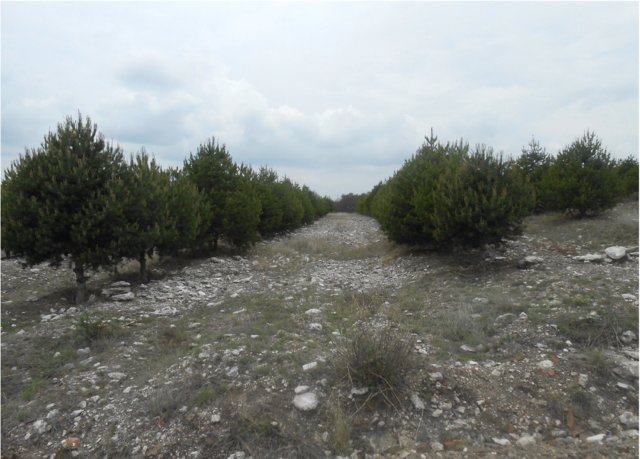
Callejones de piñón con forrajes intercalados [Мексика]
La tecnología consiste en un sistema agrosilvopastoril con árboles de Pinus cembroides (pino piñonero) alineados een bordos ─en un terreno con suelos calizos previamente subsoleado─ conformando melgas (callejones) para con cultivos anuales para grano y forraje, con pastoreo libre eventual por períodos muy breves.
- Составитель: BENJAMIN SANCHEZ BERNAL
2. Описание Подхода УЗП
2.1 Краткое описание Подхода
A Farmer Field School (FFS) is a community-based practically-oriented field study programme.
2.2 Подробное описание Подхода
Подробное описание Подхода:
Aims / objectives: It is usually a time-bound activity (generally one agricultural production cycle), involving a group (commonly 20-30) of farmers, facilitated by agricultural advisors or – increasingly – by other farmers. The FFS provides an opportunity for farmers to learn together, using practical, hands-on methods of discovery-based and participatory learning.
Methods: The methods emphasise observation, discussion, analysis, collective decision-making, presentation and taking appropriate action. Discussion and analysis are important ways to combine local indigenous knowledge with new concepts and bring both into decision-making. The aim is to develop participants’ decision-making and problem solving capacity among farmers. The process builds self-confidence (particularly for women), encourages group control of the process, and builds management and leadership skills. Although FFS are time-bound, many groups formalise their relations and continue study or action projects, including FFS on other subjects, after the FFS learning cycle is completed. The Farmer Field Schools on Integrated Land and Water Management (ILWM) in eastern and central Kenya focus on learning about how to improve management of land and water resources both on individual plot and farm level and within ‘landscapes’ and communal lands; including local watersheds, river-valleys, forested hill-tops, grazing lands, eroded gullies etc. Each FFS group experiments practically on selected SLM practices/ measures. All learning takes place in the field and farmers usually meet once per week at a selected host farm in their locality to monitor their field experiments and to discuss emerging issues. Trained facilitators, usually agricultural advisors, guide farmers in their observation and analysis of what is taking place in the field. Local farmer innovations are identified to feed indigenous knowledge into the FFS process: Innovators visit FFS groups or FFS members visit innovators farms to share their knowledge.
Other important information: The FFS process combined with the promotion of farmer innovation has proven to contribute to strong and cohesive groups that are able to make informed decisions and change cultural and practical behaviour in order to improve their production and land management. The process also builds self-confidence, and empowers especially women to take on leadership roles in the community. The impacts observed of FFS thus have strong biophysical and social dimensions.
2.3 Фотографии, иллюстрирующие Подход
2.5 Страна/ регион/ место, где применялся Подход
Страна:
Кения
Административная единица (Район/Область):
Eastern and Central Kenya
Более точная привязка места:
Mwingi, Kitui and Nakuru Districts
Map
×2.7 Тип Подхода
- в рамках проекта/ программы
2.8 Каковы цели/ задачи Подхода
The Approach focused mainly on SLM with other activities (community organisational building for collective action and collective storage and marketing of products)
Support farmers’ knowledge levels and decision making capacity in relation to sustainable land and water management Raise farmers’ yields in a sustainable manner and ultimately contribute to increased net farm income Strengthen community organisation and collective efforts
The SLM Approach addressed the following problems: Land degradation, climatic variability and loss of agricultural biodiversity, Farmers focus on their own farms and income and lack of interest for wider watershed / environment
3. Участие и распределение ролей заинтересованных сторон
3.1 Заинтересованные стороны, участвующие в реализации Подхода и их роли
- местные землепользователи/ местные сообщества
- эксперты по УЗП/ сельскому хозяйству
- государственные власти (отвечающие за планирование или принятие решений)
Ministry of Agriculture
- международные организации
FAO
3.2 Участие местных землепользователей/ местных сообществ на разных стадиях реализации Подхода
| Участие местных землепользователей/ местных сообществ | Перечислите участников и опишите их вовлеченность | |
|---|---|---|
| инициирование/ мотивация | интерактивное | |
| планирование | интерактивное | |
| выполнение | интерактивное | |
| мониторинг/ оценка | нет | |
| Research | нет |
3.4 Принятие решений по выбору Технологии/ Технологий УЗП
Укажите, кто принимал решение по выбору применяемой Технологии/ Технологий:
- в основном землепользователи при поддержке специалистов по УЗП
Поясните:
Decisions on the method of implementing the SLM Technology were made by mainly by land users supported by SLM specialists
4. Техническая поддержка, повышение компетенций и управление знаниями
4.1 Повышение компетенций/ обучение
Проводилось ли обучение землепользователей/ других заинтересованных лиц?
Да
Укажите, кто проходил обучение:
- землепользователи
- местный персонал/консультанты
Тип обучения:
- обмен опытом между фермерами
- курсы
Рассматриваемые темы:
Agricultural advisors were trained in the FFS approach and in ILWM topics through a total of four weeks of training. Farmers were trained in FFS through season-long FFS learning where farmers meet at a host-farm weekly to carry study activities.
4.2 Консультационные услуги
Есть ли у землепользователей возможность получать консультации?
Да
Укажите, где именно оказываются консультационные услуги:
- на полях землепользователей
Описание/ комментарий:
Name of method used for advisory service: Participatory extension; Participatory extension with season-long regular interaction between farmers and agricultural advisors. At a later stage also strong farmer-to-farmer extension
The approach requires an attitude shift among agricultural extension workers to become more client-orientated.
4.5 Научные исследования
Были ли научные исследования частью Подхода?
Да
5. Финансирование и внешняя материальная поддержка
5.1 Годовой бюджет мероприятий по УЗП в рамках Подхода
Если точный годовой бюжет неизвестен, укажите примерный диапазон затрат:
- 100 000-1 000 000
Комментарий (например, основные источники финансирования/ ключевые доноры):
Approach costs were met by the following donors: international: 60.0%; government: 20.0%; local community / land user(s): 20.0%
5.3 Субсидии на отдельные затраты (включая оплату труда)
Если труд землепользователя был существенным вкладом, укажите, был ли этот вклад:
- добровольный
5.4 Кредитование
Предоставлялись ли в рамках Подхода кредиты на мероприятия УЗП?
Нет
6. Анализ влияния и заключительные положения
6.1 Влияние Подхода
Сумел ли Подход помочь землепользователям внедрить и поддерживать технологии УЗП?
- Нет
- Да, немного
- Да, умеренно
- Да, существенно
yield increase of more than 200% has been recorded frequently
Did other land users / projects adopt the Approach?
- Нет
- Да, немного
- Да, умеренно
- Да, существенно
the applied practices have spread from participants to neighbours in the community
Did the Approach lead to improved livelihoods / human well-being?
- Нет
- Да, немного
- Да, умеренно
- Да, существенно
improved gender relations and division of farm workload, resistance to drought and improved livelihoods and life satisfaction in general
Did the Approach help to alleviate poverty?
- Нет
- Да, немного
- Да, умеренно
- Да, существенно
all participants fall in the poor or medium poor category and therefore the project has contributed to reduced poverty levels
6.2 Основные причины, побуждающие землепользователей внедрять УЗП
- рост продуктивности
- рост прибыли (доходности) и рентабельности
- престиж, общественное давление/ солидарность
- причастность к движению/ проекту/ группе/ сети
- friendship and collective spirit among group membe
6.3 Долгосрочная устойчивость мероприятий в рамках Подхода
Могут ли землепользователи самостоятельно (без внешней поддержки) продолжать применение того, что было реализовано в рамках Подхода?
- да
Если да, опишите как:
Graduated FFS groups have organised themselves into a network and farmer organisations that have taken on collective activities following the end of the initial project. In some cases this has included starting up self-financed new FFS groups.
6.4 Сильные стороны/ преимущества Подхода
| Сильные стороны/ преимущества/ возможности по мнению составителя или других ключевых специалистов |
|---|
| The collective action created in communities to deal with and manage their own resources. |
| Improved capacity of farmers for problem solving and innovation in ISWM. |
6.5 Слабые стороны/ недостатки Подхода и пути их преодоления
| Слабые стороны/ недостатки/ риски по мнению составителя или ответственных специалистов | Возможные пути их преодоления/снижения? |
|---|---|
| A top-down and patronising attitude towards farmers are common among agricultural staff and experts, which prevents equal and trustful relationships | Institutionalisation of participatory extension is thus needed with a change in mindset among government and other agricultural support staff. |
| The various government bodies and ministries responsible for land and water issue often operate individually without strong synergie | A stronger collaboration is needed between ministries especially Ministry of Water and Ministry of Agriculture in order to deal effectively with land and water aspects in an integrated manner. |
7. Справочные материалы и ссылки
7.1 Методы сбора/источники информации
- выезды на места, полевые обследования
- опросы землепользователей
7.2 Ссылки на опубликованные материалы
Название, автор, год публикации, ISBN:
Duveskog D. 2001. Adapted from A Study Guide for Farmer Field Schools: Water Harvesting and Soil Moisture Retention.FAO-IIRR. 2006. Discovery-based Learning on Land and Water Management: Practical Guide for Farmer Field Schools.
Ссылки и модули
Развернуть все Свернуть всеСсылки

Callejones de piñón con forrajes intercalados [Мексика]
La tecnología consiste en un sistema agrosilvopastoril con árboles de Pinus cembroides (pino piñonero) alineados een bordos ─en un terreno con suelos calizos previamente subsoleado─ conformando melgas (callejones) para con cultivos anuales para grano y forraje, con pastoreo libre eventual por períodos muy breves.
- Составитель: BENJAMIN SANCHEZ BERNAL
Модули
Нет модулей


